The success of a radio commercial largely depends on the quality of its script, as it forms the foundation for conveying a brand’s message and creating a strong connection with listeners. A well-written script engages the target audience, evokes emotions, and persuades potential customers to take action.
Therefore, advertisers must pay close attention to the minute details of their commercial scripts and refine them to perfection. Crafting a compelling script requires striking a delicate balance between creativity, brevity, and clarity, ensuring that the core message shines through even in a short timeframe.
To create an effective radio commercial script, develop a deep understanding of your target audience, establish a clear and concise message, maintain a consistent tone and style, and incorporate persuasive language and storytelling techniques. Moreover, partner with professionals like Killerspots Agency, who can combine your script with top-notch voice-over talent, sound design, and production skills to deliver a radio commercial that stands out from the competition.
In this comprehensive blog post, we will delve into the essentials of writing an effective radio commercial script, offering expert tips and insights from Killerspots Agency. Learn how to thoroughly understand your target audience, develop a powerful message that resonates, choose the right tone and style, strategically employ persuasive language and storytelling techniques, and ensure that your script is ready for production.
Understanding Your Target Audience
The key to crafting a successful radio commercial script begins with thoroughly understanding your target audience. Identifying and analyzing your audience’s characteristics will help you tailor your script to their preferences, language, and needs. Consider the following factors to gain insights on your target audience:
1. Demographics: Study the age, gender, location, and socio-economic background of your target audience to shape your message accordingly.
2. Psychographics: Explore the interests, values, and lifestyle choices of your audience to ensure your script resonates on a deeper level.
3. Listening habits: Analyze when and where your target audience listens to radio commercials, as this will provide valuable information on how to tailor your script to capture and maintain their attention.
By understanding your target audience, you can create a script that speaks their language and addresses their concerns, ultimately increasing the effectiveness of your radio commercial.
Developing a Powerful Message
The core message of your radio commercial is what stays with the listener long after the ad has finished. Ensure that this message is clear, concise, and powerful by focusing on the following aspects:
1. Identify the product or service: Clearly state the product or service you’re advertising to ensure listeners understand the focus of your commercial.
2. Highlight unique selling points: Emphasize what sets your product or service apart from competitors by showcasing distinctive features or advantages.
3. Include a clear call-to-action: Direct your audience to take the desired action, whether it’s visiting a website, contacting your business, or making a purchase.
Your radio commercial script should center on a powerful message that grabs listeners’ attention and provides a compelling reason to choose your product or service.
Choosing the Right Tone and Style
The tone and style of your script play a crucial role in making it memorable and engaging for your target audience. To choose the right tone and style for your radio commercial script, keep the following factors in mind:
1. Brand image: Align the tone and style with your brand image and values. If your brand requires a fun and upbeat tone, opt for informal language and a conversational tone. For a more formal brand, consider a professional, authoritative tone.
2. Target audience: Cater to your target audience by adopting a tone and style that suits their preferences and demographic background. For example, millennials may respond better to a conversational, casual tone, while older adults might appreciate a more formal approach.
3. Product or service: The nature of your product or service also influences the tone and style of your script. For instance, a luxury product might require a sophisticated, elegant tone, while a fast-food commercial could use a lighthearted and fun approach.
Selecting the right tone and style will ensure that your script establishes rapport with your target audience and effectively conveys your brand’s personality.
Incorporating Persuasive Language and Storytelling Techniques
By incorporating persuasive language and storytelling techniques into your script, you can enhance its impact and keep listeners engaged. Consider implementing the following strategies:
1. Use power words: Incorporate strong and emotive language to evoke emotions, create a sense of urgency, and persuade listeners to take action.
2. Employ storytelling: Weave a narrative around your product or service that connects with the audience and positions your brand as the solution to their needs or desires.
3. Address common objections: Identify potential objections or concerns your target audience might have and address them within the script, showcasing the benefits and value of your offering.
Utilizing persuasive language and storytelling techniques will enhance the effectiveness of your radio commercial, ensuring it resonates with listeners and inspires them to take action.
Final Thoughts
Crafting an engaging and effective radio commercial script requires a thorough understanding of your target audience, a powerful and clear message, a tone and style that aligns with your brand image, and strategic use of persuasive language and storytelling techniques. By incorporating these elements in your script, you will create radio commercials that captivate listeners and drive results.
To take your radio commercial production to the next level, consult with the experienced team at Killerspots Agency. Contact us at 513-270-2500 or visit our contact page to see how we can help you create radio advertisements that leave a lasting impact on your audience.




















